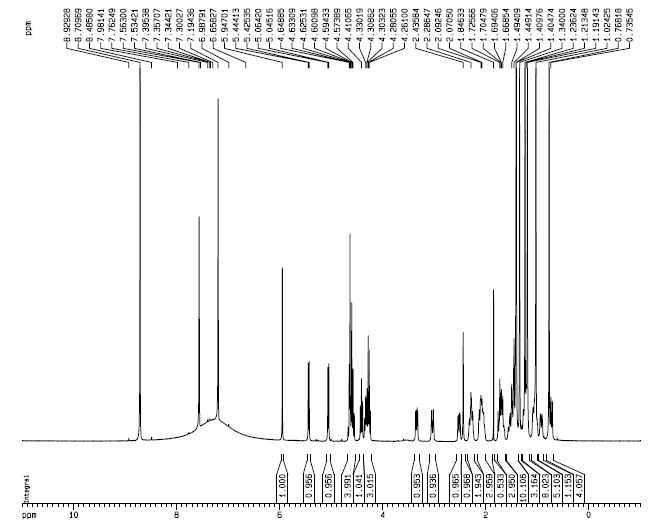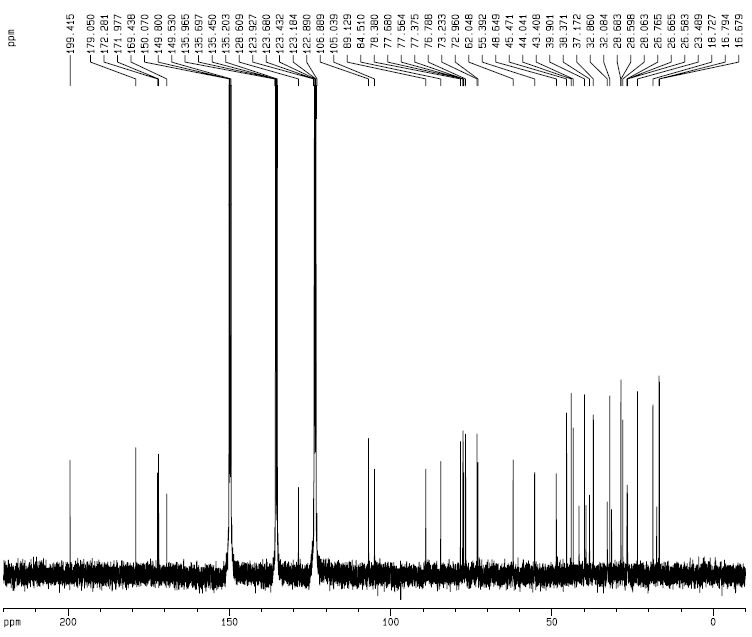|
[1]
|
Isbrucker, R. A. and G. A. Burdock (2006). "Risk and safety assessment on the consumption of Licorice root (Glycyrrhiza sp.), its extract and powder as a food ingredient, with emphasis on the pharmacology and toxicology of glycyrrhizin." Regulatory Toxicology and Pharmacology 46(3): 167-192. |
|
[2]
|
Jiang, Y., et al. (2004). "Preparative purification of glycyrrhizin extracted from the root of liquorice using high-speed counter-current chromatography." Journal of Chromatography A 1033(1): 183-186. |
|
[3]
|
Moro, T., et al. (2008). "Glycyrrhizin and its metabolite inhibit Smad3-mediated type I collagen gene transcription and suppress experimental murine liver fibrosis." Life Sciences 83(15–16): 531-539. |
|
[4]
|
Menegazzi, M., et al. (2008). "Glycyrrhizin attenuates the development of carrageenan-induced lung injury in mice." Pharmacological Research 58(1): 22-31. |
|
[5]
|
Ohnishi, M., et al. (2011). "HMGB1 inhibitor glycyrrhizin attenuates intracerebral hemorrhage-induced injury in rats." Neuropharmacology 61(5–6): 975-980. |
|
[6]
|
Lin, G., et al. (1999). "The effects of pretreatment with glycyrrhizin and glycyrrhetinic acid on the retrorsine-induced hepatotoxicity in rats." Toxicon 37(9): 1259-1270. |
|
[7]
|
Baba, M. and S. Shigeta (1987). "Antiviral activity of glycyrrhizin against varicella-zoster virus in vitro." Antiviral Research 7(2): 99-107. |
|
[8]
|
Li, X.-h., et al. (2012). "Effect of glycyrrhizin on mRNA expression of cytokines in PBMCs from non-responders to hepatitis B vaccine." Shijie Huaren Xiaohua Zazhi 20(29): 2827-2831. |
|
[9]
|
Tu, C.-t., et al. (2012). "Glycyrrhizin regulates CD4+T cell response during liver fibrogenesis via JNK, ERK and PI3K/AKT pathway." Int. Immunopharmacol. 14(4): 410-421. |
|
[10]
|
Chen, L.-f., et al. (2013). "Effect of Compound glycyrrhizin on Th17 cell-related cytokines in patients with psoriasis vulgaris." Zhongguo Yaowu Yu Linchuang 13(2): 227-228. |
|
[11]
|
Qin, X. and L. Chen (2011). "Regulatory effect of glycyrrhizin on expression of interferon (IFN)-γ and tumor necrosis factor (TNF)-β in peripheral blood mononuclear cells of patients with alopecia areata." Zhonghua Pifuke Zazhi 44(12): 877-878. |
|
[12]
|
Singh, B., et al. (2009). "HPTLC Densitometric Quantification of Glycyrrhizin, Glycyrrhetinic Acid, Apigenin, Kaempferol and Quercetin from Glycyrrhiza glabra." Chromatographia 70(11/12): 1665-1672. |
|
[13]
|
Kočevar Glavač, N. and S. Kreft (2012). "Excretion profile of glycyrrhizin metabolite in human urine." Food Chemistry 131(1): 305-308. |
|
[14]
|
Zhang, L., et al. (2005). "Selective depletion of glycyrrhizin from Si-Ni-San, a traditional Chinese prescription, blocks its effect on contact sensitivity in mice and recovers adhesion and metalloproteinases production of T lymphocytes." International Immunopharmacology 5(7–8): 1193-1204. |

 Chinese Medicinal Material Images Database
Chinese Medicinal Material Images Database
 Medicinal Plant Images Database
Medicinal Plant Images Database
 Chinese Medicine Specimen Database
Chinese Medicine Specimen Database



